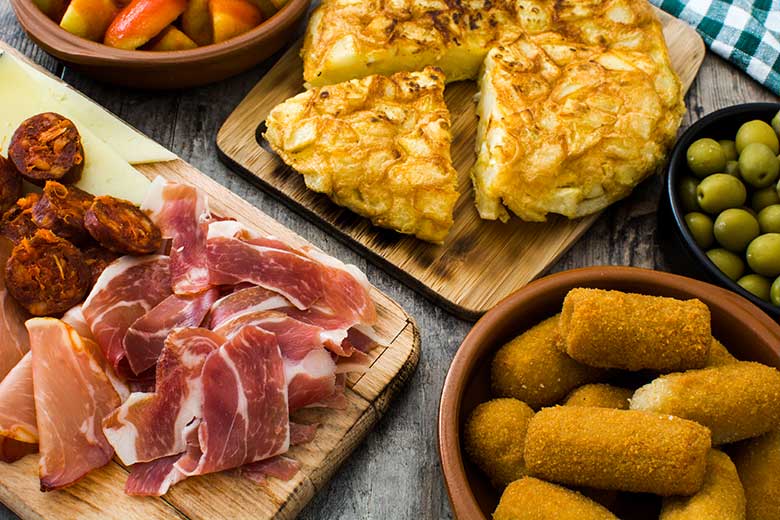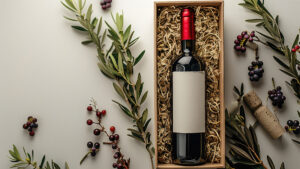
These little snacks are perfect to serve with a casual drink – they’re quick to prepare and fantastic crowd-pleasers. Placing a varied platter like this on your table as you pour out the glasses will be the finishing touch to kick off a relaxed and enjoyable evening. Here’s some information about the history of tapas, and some inspiration for our preferred pairings.
The word tapa comes from the Castillian tapar which means ‘cover’ – this is linked to a tradition of placing a little amuse-bouche with charcuterie or cheese over the top of a wine glass at the beginning of a meal. Some say this was a question of cleanliness, to prevent insects and dust from finding their way into the wine. Others say this was a ritual thought up by Alfonso X as a way to discourage his subjects from drinking too much on an empty stomach.
In traditional, Spanish tapas bars, each little amuse-bouche is served on a ‘pincho’ (toothpick) and everybody helps themselves. This usually involves the unbeatable combination of fresh bread and olive oil. When it comes to paying the bill, you simply count the number of toothpicks!
The Spanish eat tapas at any time of the day or night in bars, whereas other places, such as France, tend to serve them as an aperitif. Of course, little snacks like this are ripe for creativity and imagination. You can make them your own using regional products, and they can be as simple or sophisticated as you like!
Here are some examples to get you started:
- Thin slices of Pata Negra or Iberian ham with slices of parmesan. This one couldn’t be easier, and it goes nicely with Champagne, especially a Blanc de Blancs or an undosed cuvée. If you don’t have Champagne, a dry, cool white like a Chenin from the Loire or a Pinot Gris from Alsace.
- Garlic-marinated prawns: a lively white wine such as a Sauvignon from Touraine or Graves, or a young Riesling.
- Prawn and avocado terrine: another cool white, one with a little more roundness, like a Mâcon Chardonnay, or a Sancerre Sauvignon.
- Piquillos (little red peppers) stuffed with goats’ cheese: a dry, refreshing white such as a Muscadet or a young Gamay (eg from Fleurie, Côtes de Brouilly or Touraine). Sancerre or Chablis would go down well, too.
- Polenta croutons with dried tomato: a southern wine from Provence, in rosé or white, or perhaps a white from the Rhône – in any case, avoid oaky wines here!
- Fried calamari: definitely a white! Choose a simple and nicely acidic wine from the Loire such as a Muscadet, a Quincy or a Menetou-Salon.
- Tapenade croutons/toasts: opt for a rosé, the best being from Côtes-de-Provence, Tavel or Coteaux d’Aix.
- Anchovy rolled courgettes / Herring with potatoes: a lively, acidic wine to balance out the fat, such as a Muscadet, an Aligoté or a dry Sauvignon from Touraine.
- Comté gougères (cheese profiteroles): a yellow wine from the Jura, a Meursault or a Savoie.
- Roquefort and pear on gingerbread: a sweet or dessert wine with a hint of acidity, such as one from the Jurançon, Bonnezeaux, Coteaux de Layon or Barsac.
- Ham tartine with fig chutney: a Vouvray demi-sec, both still and sparkling go well! In any case a tender white with only subtle fruitiness.
- Spicy chicken bites: a dry white with a certain roundness such as a Mâcon cuvée or a Beaujolais blanc. Alternatively, a Pinot Gris with a bit of sweetness or a Gewurztraminer, though keep it on the subtler side.
We hope that these ideas have inspired you for your next little get-together – you’ll be quite the expert if you pair some of the wines as well!



